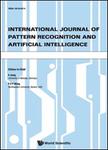版权所有:内蒙古大学图书馆 技术提供:维普资讯• 智图
内蒙古自治区呼和浩特市赛罕区大学西街235号 邮编: 010021

作者机构:Artillery Acad People Liberat Army Hefei 230022 Anhui Peoples R China Chinese Acad Sci Inst Intelligent Machines Beijing 100864 Peoples R China
出 版 物:《INTERNATIONAL JOURNAL OF PATTERN RECOGNITION AND ARTIFICIAL INTELLIGENCE》 (国际图形识别与人工智能杂志)
年 卷 期:2004年第18卷第8期
页 面:1473-1499页
核心收录:
学科分类:08[工学] 0812[工学-计算机科学与技术(可授工学、理学学位)]
基 金:National Science Foundation NSF
主 题:genetic algorithms radial basis probabilistic neural networks hidden centers recursive orthogonal least square algorithm modified K-means algorithm
摘 要:This paper discusses using genetic algorithms (CA) to optimize the structure of radial basis probabilistic neural networks (RBPNN), including how to select hidden centers of the first hidden layer and to determine the controlling parameter of Gaussian kernel functions. In the process of constructing the genetic algorithm, a novel encoding method is proposed for optimizing the RBPNN structure. This encoding method can not only make the selected hidden centers sufficiently reflect the key distribution characteristic in the space of training samples set and reduce the hidden centers number as few as possible, but also simultaneously determine the optimum controlling parameters of Gaussian kernel functions matching the selected hidden centers. Additionally, we also constructively propose a new fitness function so as to make the designed RBPNN as simple as possible in the network structure in the case of not losing the network performance. Finally, we take the two benchmark problems of discriminating two-spiral problem and classifying the iris data, for example, to test and evaluate this designed GA. The experimental results illustrate that our designed CA can significantly reduce the required hidden centers number, compared with the recursive orthogonal least square algorithm (ROLSA) and the modified K-means algorithm (MKA). In particular, by means of statistical experiments it was proved that the optimized RBPNN by our designed GA, have still a better generalization performance with respect to the ones by the ROLSA and the MKA, in spite of the network scale having been greatly reduced. Additionally, our experimental results also demonstrate that our designed CA is also suitable for optimizing the radial basis function neural networks (RBFNN).